In the remote highlands of Vietnam’s Ha Giang province, a centuries-old tradition unfolds each spring that celebrates love in its most poetic form. The Khau Vai Love Market, nestled among limestone mountains and terraced fields, draws visitors from across Vietnam and around the world. Unlike typical trading markets, this gathering carries a bittersweet purpose a single day when former lovers can reunite, reminisce, and celebrate what once was, before returning to their separate lives. At Phieu Travel, we invite you to discover this remarkable cultural phenomenon that blends romance, tradition, and the enduring human connection that transcends conventional boundaries.
1. Introduction: What Makes Khau Vai Love Market Unique?
The Khau Vai Love Market stands apart as one of Vietnam’s most fascinating cultural events. Taking place just once a year in the spring, this gathering represents far more than a mere festival or marketplace. It embodies a profound tradition that honors both the power and sacrifice of love across Vietnam’s highland communities. Unlike typical tourist attractions, the market carries genuine historical and emotional significance for the ethnic minority groups who participate.
What truly distinguishes Khau Vai is its origin story and purpose a dedicated time when former lovers, now married to others, can meet again without social judgment. This unique concept has few parallels in global traditions, making it a window into Vietnam’s diverse cultural tapestry. The market blends ceremonial rituals with festive celebrations, creating an atmosphere of both reverence and joy.
Visitors encounter not just a colorful display of cultural customs but a living tradition that continues to hold meaning for local communities. The market’s remote location in Ha Giang’s mountainous landscape adds to its mystique, requiring travelers to journey through some of Vietnam’s most spectacular scenery. At Phieu Travel, we’ve guided countless visitors through this experience, watching as they connect with a tradition that speaks to universal aspects of human emotion.
1.1 Overview & Atmosphere
The Khau Vai Love Market creates an atmosphere unlike any other cultural gathering in Vietnam. As dawn breaks over the mountain village, streams of people in vibrant traditional dress begin arriving from surrounding communes and districts. The air fills with the sounds of traditional instruments, laughter, and multiple dialects as different ethnic groups converge on the festival grounds. Scents of incense and local cuisine mingle in the cool mountain air, creating a multisensory experience from the moment you arrive.
The market unfolds across several zones, each with distinct purposes and energies. Near the central temples, a more solemn atmosphere prevails as visitors participate in rituals and prayers. Just beyond, open fields transform into lively gathering spaces where former lovers meet for private conversations amid the collective celebration. Market areas buzz with activity as vendors sell local handicrafts, traditional foods, and agricultural products.
What strikes most visitors is the genuine warmth and inclusivity extended to outsiders. Though centered around deeply personal traditions, the local communities welcome respectful travelers to observe and even participate in many aspects of the festival. Throughout the day, the atmosphere shifts from ceremonial reverence in the morning to increasingly festive celebrations as afternoon approaches. By evening, music and dance performances create a joyful communal atmosphere that often continues well into the night under star-filled mountain skies.
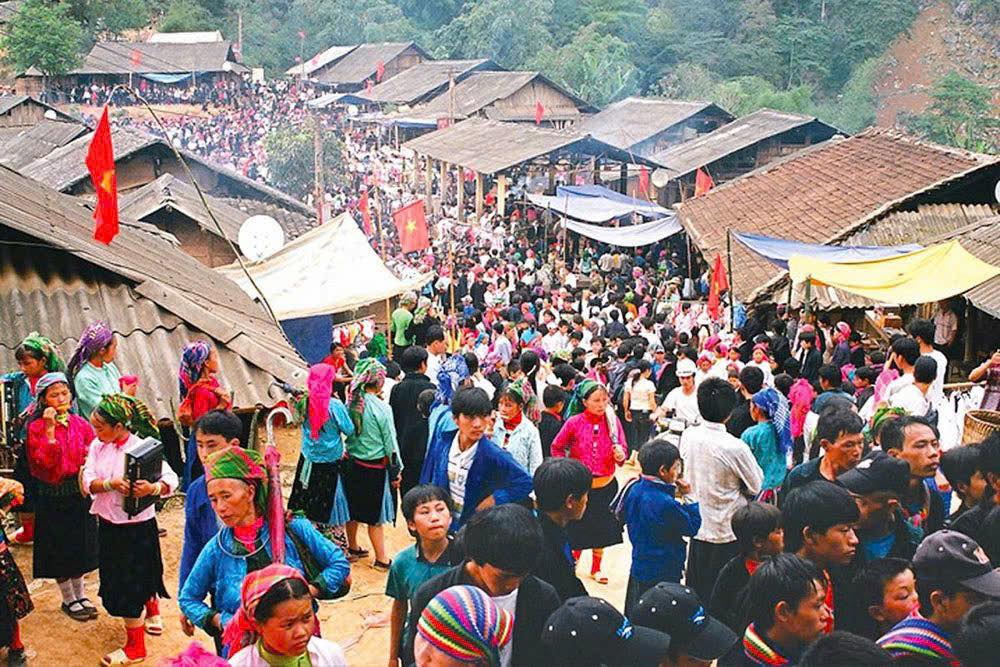
The Ultimate Guide to Ha Giang in March: Flowers, Weather & Tips
2. The Fascinating Legend and History Behind the Market
The Khau Vai Love Market’s origins trace back to a poignant tale of sacrifice and forbidden love that resonates across generations. Local elders say the tradition began hundreds of years ago, evolving from personal tragedy into a celebrated cultural institution. The market’s endurance through centuries of political and social change testifies to its deep roots in the collective identity of Ha Giang’s highland communities. What began as a private rendezvous between star-crossed lovers gradually transformed into a recognized cultural event.
Historical records show the market has been conducted in roughly the same location for at least 100 years, though oral traditions suggest much earlier origins. During the colonial period, French administrators documented the practice, noting its unique characteristics compared to other highland gatherings. Throughout Vietnam’s modern history, the market has survived wars, border conflicts, and changing political ideologies. Its resilience speaks to how deeply the tradition is valued by local communities.
Today’s Khau Vai Love Market represents a living cultural heritage that has gained recognition beyond local boundaries. In recent decades, Vietnamese cultural authorities have worked to document and preserve the tradition, recognizing its significance to national cultural identity. While tourism has brought new attention to the event, community elders maintain strict protocols to ensure its authentic character remains intact. The market now exists at a fascinating intersection of ancient tradition and contemporary cultural celebration, making it a particularly meaningful experience for travelers seeking genuine connections to Vietnam’s diverse heritage.
2.1 The Legend of Ba and Ut
At the heart of the Khau Vai Love Market lies the tragic love story of a young woman named Ba and a man named Ut. According to local legend, they fell deeply in love despite belonging to different ethnic groups she from the Giay community and he from the Hmong. Their villages had long-standing conflicts over land and resources, making their relationship forbidden by both families. Despite these obstacles, the couple continued to meet secretly at a mountain pass near what is now Khau Vai.
When their relationship was discovered, tensions escalated between their villages. Fighting broke out, resulting in injuries and threatening to develop into a larger conflict. Seeing the suffering their love had caused, Ba and Ut made the heartbreaking decision to separate for the greater good of their communities. Before parting, they made a solemn promise to meet once each year at the same mountain pass where they had often secretly gathered. This would allow them to honor their feelings without disrupting community harmony.
Their sacrifice and yearly meetings became known throughout the region, gradually attracting other couples in similar situations. Over generations, what began as a private reunion between two lovers evolved into a recognized tradition embraced by multiple ethnic groups across the highlands. Today, the temples at Khau Vai honor Ba and Ut’s memory, with many visitors making offerings to acknowledge their sacrifice and the tradition they unwittingly established.
2.2 Evolution of the Love Market Tradition
The tradition of the Khau Vai Love Market has undergone significant evolution over centuries while maintaining its core purpose. What began as discreet meetings between former lovers gradually gained community acceptance, transforming from a somewhat secretive practice into an acknowledged cultural institution. By the mid-19th century, the gathering had established a regular calendar date and specific customs that formalized its place in highland cultural life. Local leaders recognized its value in preventing community conflicts while acknowledging the complexity of human relationships.
Throughout the 20th century, the market adapted to Vietnam’s changing social landscape. During periods of war and hardship, the gathering sometimes reduced in scale but never disappeared entirely. Following Vietnam’s reunification, cultural authorities began documenting the tradition as part of efforts to preserve ethnic minority heritage. The 1990s brought increased domestic tourism, introducing the market to wider Vietnamese audiences. International visitors began arriving in small numbers by the early 2000s, bringing new awareness to this unique cultural phenomenon.
Today’s Khau Vai Love Market balances traditional practices with contemporary influences. While former lovers still meet as the central tradition, the event now includes broader cultural exchanges between ethnic communities. Local authorities work with village elders to ensure commercialization doesn’t overshadow authentic cultural practices. The market now serves multiple purposes honoring its romantic origins, celebrating ethnic diversity, and providing economic opportunities for local communities. This evolution reflects the dynamic nature of living traditions while preserving the emotional core that has sustained the market for generations.
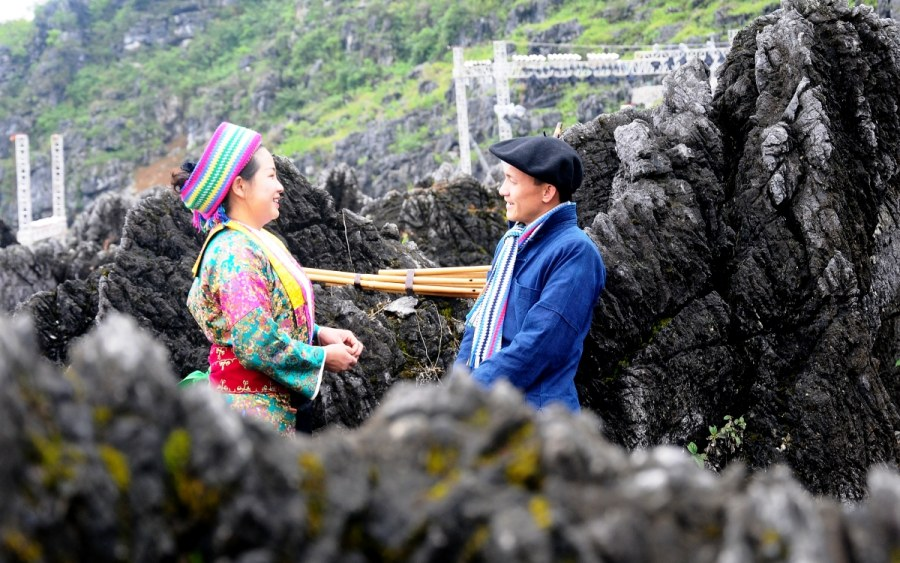
Ha Giang Loop cost guide 2025: real prices, tour options & savings
3. When and Where: Practical Information for Visitors
The Khau Vai Love Market takes place in a specific location and follows a fixed annual schedule, making advance planning essential for visitors. Understanding the geographical context and timing will help you make the most of this unique cultural experience. The market unfolds in a remote but stunningly beautiful corner of Vietnam’s northernmost province, requiring some effort to reach but rewarding travelers with both cultural insights and spectacular landscapes along the journey.
Proper preparation enhances your experience significantly, as the remote location means limited tourism infrastructure. Accommodations fill quickly during the festival period, and transportation options may be limited. The weather in Ha Giang’s highlands can be unpredictable even during spring, with cool mornings and evenings contrasting with warmer afternoons. Layered clothing and rain protection are advisable regardless of forecasts.
At Phieu Travel, we emphasize the importance of timing your visit precisely, as arriving even a day late means missing the central gathering entirely. While the surrounding region offers tremendous natural beauty and cultural experiences year-round, the love market itself happens on just one specific day annually. This exclusivity is part of what makes attending so special you’re witnessing a tradition that unfolds exactly once each year, connecting you to a specific moment in the cultural calendar of Vietnam’s northern highlands.
3.1 Exact Dates and How to Attend
The Khau Vai Love Market takes place on the 27th day of the third lunar month according to the traditional Vietnamese calendar. This date typically falls in April or early May in the Western calendar, varying slightly each year. For 2024, the market will be held on May 4th, while the 2025 event will occur on April 24th. The market activities begin early in the morning and continue through late evening, with different rituals and events happening throughout the day.
To attend respectfully, visitors should understand that while photography is generally permitted in public areas, asking permission before taking close-up photos of individuals is considered good etiquette. The market welcomes outside visitors, but certain ceremonial areas may have restrictions. Following local guides’ advice about appropriate behavior shows respect for the cultural significance of the event. Most activities take place outdoors, so comfortable walking shoes and weather-appropriate clothing are essential.
Visitors have several options for attending, including joining organized tours from Hanoi or Ha Giang City, hiring local guides, or traveling independently. Phieu Travel offers guided small-group experiences that include cultural interpretation, helping you understand the significance of different activities and customs you’ll encounter. We recommend arriving in the area at least one day before the market to acclimate to the highland environment and enjoy the pre-festival atmosphere as communities prepare for the main event.
3.2 Getting to Khau Vai from Ha Giang and Hanoi
Reaching Khau Vai requires careful planning due to its remote location in Ha Giang province. The journey typically begins in Hanoi, where travelers have several transportation options to reach Ha Giang City. Public buses depart regularly from Hanoi’s My Dinh bus station, with the journey taking approximately 6-7 hours depending on road conditions. Alternatively, private car transfers offer more comfort and flexibility, though at a higher cost. Motorcycles can also be rented in Hanoi for experienced riders comfortable with mountain roads.
From Ha Giang City to Khau Vai, the journey continues through increasingly mountainous terrain. The most direct route passes through Quan Ba, Yen Minh, and Dong Van before reaching Meo Vac district, where Khau Vai is located. This stretch covers approximately 160 kilometers of winding mountain roads with spectacular scenery but challenging driving conditions. Public transportation options become limited, with local buses running infrequently. Many visitors opt for private transportation arranged through local agencies or join organized tours that handle logistics.
During the festival period, special transportation services often operate, including shared vans departing from Ha Giang City and Meo Vac town directly to Khau Vai. Phieu Travel arranges comfortable transportation packages that allow you to focus on the experience rather than logistics. We recommend allowing a full day for travel from Ha Giang to Khau Vai, with potential overnight stops in Dong Van or Meo Vac to break up the journey and explore other highlights of the region. The challenging journey becomes part of the adventure, offering stunning views of the UNESCO-recognized Dong Van Karst Plateau Geopark along the way.
3.3 Essential Travel Tips
Accommodations near Khau Vai are extremely limited, so booking well in advance is crucial. Most visitors stay in Meo Vac town (approximately 20km away) or Dong Van (40km), where guesthouses and small hotels cater to travelers. During the festival, even these options fill quickly, sometimes months in advance. Phieu Travel secures comfortable accommodations for our guests through established relationships with local providers, ensuring you have a place to rest after long festival days.
Weather in Ha Giang’s highlands can change rapidly, with spring bringing both warm sunshine and sudden rain showers. Pack layers including a light jacket, rain protection, sun hat, and comfortable walking shoes for uneven terrain. The mountain environment can feel quite cool in mornings and evenings, even when daytime temperatures are pleasant. Bringing a small backpack for festival essentials keeps your hands free for exploring and photography.
Cultural sensitivity enhances both your experience and your welcome from local communities. Learning a few basic Vietnamese phrases shows respect, even if communication primarily happens through guides or gestures. Dress modestly, particularly when visiting temples or participating in ceremonial activities. Small denominations of Vietnamese dong are useful for purchasing handicrafts and food from vendors who rarely accept cards or foreign currency. Finally, consider bringing a small gift if you’re invited to interact with local families fruit, tea, or school supplies for children are always appreciated gestures that transcend language barriers.
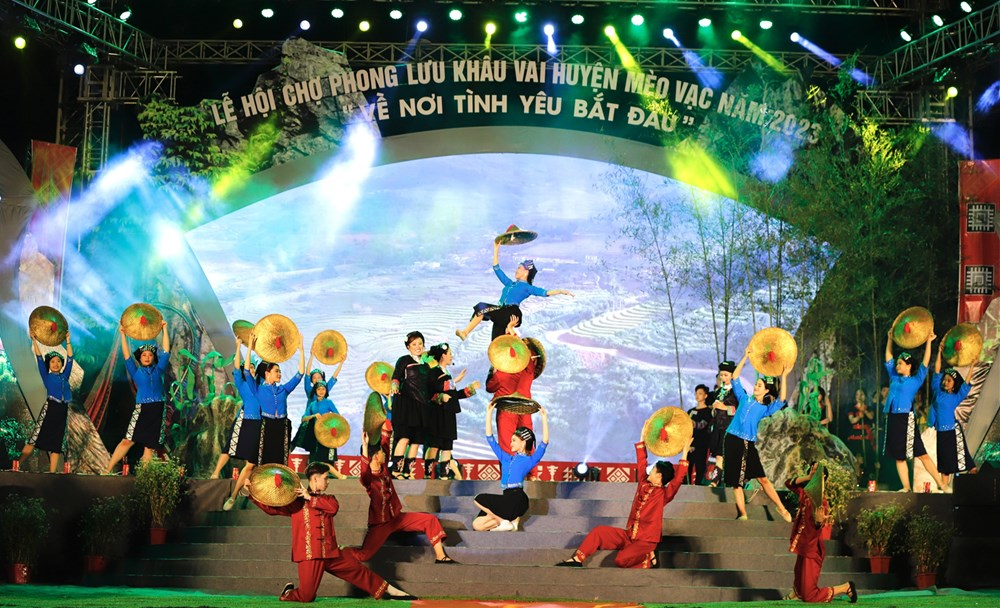
Travel Tips for Meo Vac, Ha Giang and 5 Must-Visit Attractions
4. What to Expect: Festival Highlights & Activities
The Khau Vai Love Market offers a rich tapestry of experiences that unfold throughout the day and evening. Morning activities tend toward the ceremonial, with rituals at local temples setting a reverent tone for the day ahead. As the day progresses, the atmosphere gradually shifts toward celebration, with music, dance, and feasting creating a festive environment. This rhythm reflects the market’s dual nature both a solemn honoring of tradition and a joyful celebration of cultural identity and human connection.
Visitors will observe distinct zones of activity across the festival grounds. The central area around Ong and Ba temples hosts ceremonial activities and is where many former lovers traditionally meet. Surrounding fields become gathering spaces for different ethnic groups, each maintaining their own customs while participating in the broader celebration. Market areas feature vendors selling everything from traditional foods to handcrafted textiles and agricultural products from surrounding communities.
Throughout the festival, you’ll notice different ethnic groups distinguished by their traditional dress, from the embroidered indigo clothing of the Hmong to the colorful headdresses of the Lo Lo and the distinctive patterns of the Dao. Each group brings its own customs, foods, and performance traditions to the gathering, creating a multicultural tapestry that showcases the incredible diversity of Vietnam’s highland communities. At Phieu Travel, we consider this cultural richness one of the most valuable aspects of the Khau Vai experience a chance to witness multiple traditions simultaneously in an authentic setting.
4.1 Rituals, Prayers, and Ceremonies
The ceremonial aspects of the Khau Vai Love Market begin at dawn with offerings and prayers at the twin temples dedicated to Ong and Ba, representing the legendary lovers. Local spiritual leaders, typically elders from surrounding communities, lead these rituals using traditional practices that blend ancestor worship with nature-based spiritual beliefs. Visitors will observe people bringing offerings of incense, flowers, fruits, and sometimes rice wine to present at temple altars while making personal prayers for happiness, good fortune, or resolution of relationship difficulties.
Following the morning temple ceremonies, a procession often forms, moving from the temples to the central festival grounds. This formal movement marks the transition from the purely ceremonial to the broader celebration. Participants wear their finest traditional clothing, and the procession typically includes music played on traditional instruments like the khen (bamboo pipes) and various drums. Elders lead the way, carrying ritual objects and ceremonial flags that represent different participating communities.
Throughout the day, smaller ceremonies continue at various locations across the festival grounds. These may include blessing rituals for new relationships, prayers for fertility and family happiness, and ceremonies honoring the spirits of the mountains and forests that form the physical and spiritual landscape of the region. While some ceremonies remain private for community members, many welcome respectful observers. Phieu Travel guides can help you understand the significance of different rituals and identify appropriate times and places for observation or participation as invited by local communities.
4.2 Music, Dance, and Games
The afternoon brings the festival’s most vibrant cultural expressions through music and dance performances that showcase the rich artistic traditions of Ha Giang’s ethnic communities. Hmong reed pipe ensembles create haunting melodies that echo through the mountain valley, while Dao drummers establish rhythmic foundations for traditional dances. Formal performances take place on temporary stages, but spontaneous music circles form throughout the grounds as visitors and locals alike share their cultural traditions.
Traditional dances tell stories of courtship, harvest, and historical events important to each ethnic group. The Pao Dung singing of the Dao people features call-and-response patterns that invite audience participation. The Hmong perform circle dances where unmarried young people can meet potential partners through structured social interaction. The Giay and Tay groups often showcase couple dances that demonstrate grace and coordination. Many performances invite audience participation, offering visitors a chance to learn simple steps alongside experienced dancers.
Traditional games provide entertainment and friendly competition throughout the afternoon. You might witness or participate in tug-of-war contests, seed-throwing competitions, or crossbow demonstrations that showcase skills valued in highland communities. Couples’ games create opportunities for playful interaction, reflecting the market’s romantic origins. Some activities include testing strength by lifting heavy stones or demonstrating agility by navigating obstacles while carrying water containers. These games connect visitors to traditional forms of entertainment that predate modern technology, offering insights into how communities have created joy and built connections across generations.
4.3 Culinary Experiences and Local Crafts
The Khau Vai Love Market presents a rare opportunity to sample authentic highland cuisine from multiple ethnic traditions in one location. Food stalls and cooking areas spread throughout the festival grounds, each offering specialties prepared using traditional methods. Look for thắng cố (a Hmong specialty stew made with various meats and herbs), smoked pork dishes, bamboo-cooked sticky rice, and various foraged mountain vegetables prepared with distinctive local seasonings. Local rice wine (rượu) served in communal fashion often accompanies meals, with hosts typically offering small cups to guests as a gesture of welcome.
Craft demonstrations showcase traditional skills passed through generations, including textile weaving, basket making, silver jewelry crafting, and woodworking. The Hmong are particularly known for their indigo dyeing and intricate embroidery, while Dao artisans often demonstrate paper making and distinctive red-bordered ceremonial clothing. Many crafts people welcome questions and even offer visitors the chance to try simple techniques. These interactions provide deeper understanding of the time, skill, and cultural knowledge embedded in each handcrafted item.
The market area offers a unique shopping opportunity for those interested in authentic highland crafts. Unlike tourist-oriented markets in larger cities, items sold at Khau Vai typically come directly from the artisans who made them, with prices reflecting fair value for handmade quality. Textiles feature prominently, including embroidered hemp cloth, indigo-dyed fabrics, and traditional clothing items. Silver jewelry, bamboo items, herbal medicines, and agricultural products like honey, dried mushrooms, and mountain tea make unique souvenirs that support local livelihoods. Phieu Travel encourages responsible purchasing that values the cultural significance and craftsmanship of traditional items while supporting sustainable livelihoods in highland communities.
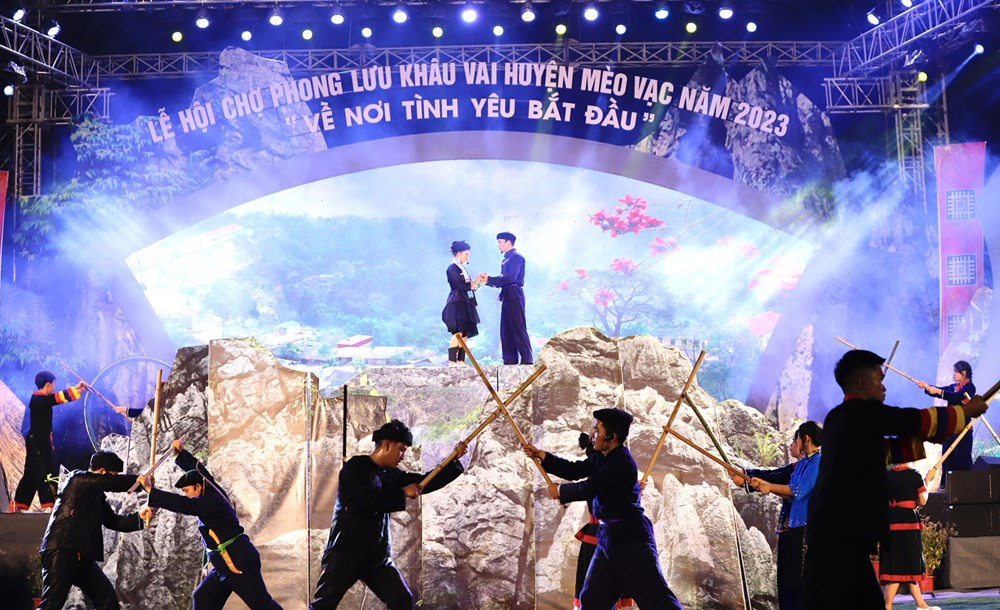
5. Cultural Significance: Ethnic Groups, Traditions, and Heritage Recognition
The Khau Vai Love Market represents far more than a tourist attraction it embodies living cultural heritage that continues to evolve while maintaining connections to ancient traditions. For local communities, the market creates space for cultural expression and transmission of knowledge between generations. Elders play crucial roles in maintaining proper protocols, while younger community members learn through participation. This generational continuity helps preserve not just the visible elements of culture but the underlying values and worldviews they represent.
Beyond its romantic origins, the market functions as an important cross-cultural meeting point where different ethnic groups interact peacefully and celebrate their shared mountain homeland. These interactions have historically facilitated trade, cultural exchange, and even marriages between communities. The market represents a rare example of how cultural differences can be bridges rather than barriers, with multiple ethnic groups maintaining distinct identities while participating in a shared tradition.
In recent years, Vietnamese cultural authorities have recognized the Khau Vai Love Market as an important element of national intangible cultural heritage. This designation acknowledges both its historical significance and ongoing cultural value. While not yet on UNESCO’s international heritage lists, the market exemplifies the kind of living tradition that such designations aim to protect practices that carry deep meaning for communities while offering insights into shared human experiences across cultural boundaries. At Phieu Travel, we believe supporting such traditions through respectful cultural tourism helps ensure they remain viable in a rapidly changing world.
5.1 Participating Ethnic Minorities
The Khau Vai Love Market brings together members of numerous ethnic groups, creating a remarkable showcase of northern Vietnam’s cultural diversity. The Hmong people, recognizable by their indigo-dyed clothing with colorful geometric embroidery, form one of the largest participating groups. Different Hmong subgroups including Flower Hmong, Black Hmong, and White Hmong each bring distinctive clothing styles and cultural practices to the gathering. Their musical traditions, featuring reed pipes and drums, often provide soundtracks for festival activities.
The Dao (sometimes spelled Yao) people participate with their characteristic red headpieces and intricately embroidered clothing. Dao spiritual practices, which blend ancestor worship with animistic traditions, inform many of the ceremonial aspects of the market. The Giay people, connected to the legend of the market’s founding, bring their own cultural contributions through distinctive blue and white clothing, bamboo crafts, and culinary traditions. Other participating groups include the Tay, Nung, Lo Lo, and Pa Then, each adding unique elements to the cultural tapestry.
Interestingly, these diverse ethnic groups maintain their distinct cultural identities while participating in the shared tradition of the love market. This demonstrates how the event functions as both an expression of specific cultural practices and a platform for intercultural exchange. For visitors, this creates an exceptional opportunity to observe multiple living traditions simultaneously, gaining perspective on both the diversity and commonalities across Highland cultures. Phieu Travel guides include members of several ethnic groups who provide insider perspectives on these cultural expressions and help visitors understand appropriate ways to engage respectfully with each community.
5.2 Meaning for Local Communities and Heritage Recognition
For local communities, the Khau Vai Love Market carries meanings far beyond its surface appeal to visitors. It serves as an annual affirmation of cultural identity and community bonds, reinforcing connections to ancestral traditions in a rapidly changing world. The market creates economic opportunities through craft sales and tourism services, helping support traditional livelihoods that might otherwise be abandoned for urban migration. Perhaps most importantly, it provides a structured occasion for younger generations to actively engage with cultural practices, ensuring knowledge transmission continues.
The market’s romantic foundations still resonate in contemporary highland communities, where arranged marriages remain common and social restrictions on relationship choices can create situations similar to the legendary lovers. While modern participants rarely use the market for its original purpose of meeting former lovers, the tradition acknowledges the complexity of human emotions and provides a symbolic space for honoring past connections. This psychological and social function represents an important aspect of cultural wisdom embedded in the tradition.
Vietnam’s recognition of the Khau Vai Love Market as national intangible cultural heritage in 2013 has brought increased attention and some preservation resources. This designation acknowledges the market’s unique cultural significance and the importance of safeguarding its authentic character. Local authorities now work with community elders to balance tourism development with cultural integrity, ensuring the tradition evolves on its own terms rather than becoming merely a performance for outsiders. This approach to cultural heritage management reflects growing recognition that living traditions must remain meaningful to their communities first and foremost, even as they welcome respectful visitors seeking cross-cultural understanding.
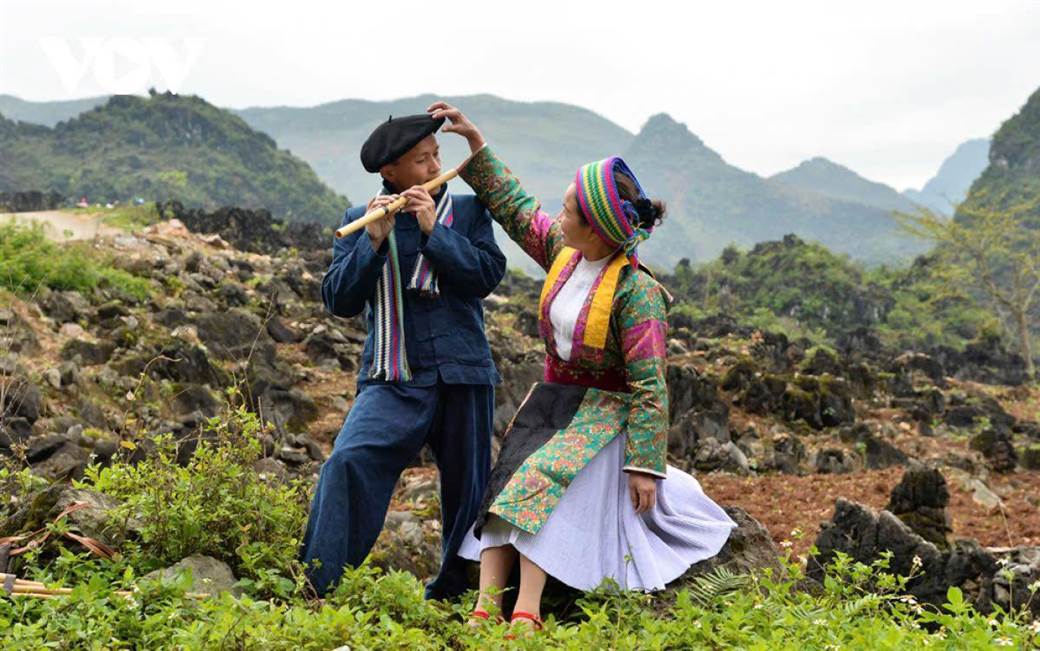
6. Essential Visitor FAQs About Khau Vai Love Market
The unique nature of the Khau Vai Love Market often raises questions from travelers planning their visit. Understanding basic protocols helps ensure you have a positive experience while showing respect for local traditions. While the market welcomes visitors, its primary purpose remains cultural rather than commercial, making awareness of appropriate behavior particularly important. Preparation enhances both your comfort and your ability to engage meaningfully with the experience.
Most first-time visitors wonder about practical matters like accommodation, transportation, and whether English is commonly spoken. The remote location presents logistical challenges that require advance planning, especially during the busy festival period when facilities reach capacity. Working with experienced providers like Phieu Travel can address many of these concerns through established relationships with local service providers and knowledgeable guides who bridge cultural and linguistic gaps.
Visitors also frequently ask about photography, appropriate dress, and whether certain areas or activities might be off-limits. These questions reflect understandable concerns about respectful participation in cultural events. The following section addresses these common inquiries, helping you prepare for a visit that honors both the communities who maintain this tradition and your own desire for authentic cultural engagement with one of Vietnam’s most fascinating living heritage practices.
6.1 Tips, Etiquette, and Common Questions
When and where does the Khau Vai Love Market festival take place?
The festival occurs on the 27th day of the third lunar month (typically April or early May in the Western calendar) in Khau Vai commune, Meo Vac district, Ha Giang province. The main gathering takes place around the Ong and Ba temples and adjacent fields. Activities begin early in the morning and continue until late evening, with different events happening throughout the day.
6.2 What is the origin or legend behind the Khau Vai Love Market?
The market originated from the legend of Ba and Ut, lovers from different ethnic groups forced to separate to end conflict between their communities. They promised to meet once yearly at Khau Vai to honor their feelings without disrupting community peace. Over time, their story inspired a tradition where former lovers could reunite annually without social judgment, eventually evolving into today’s cultural festival.
6.3 How can travelers get to the Khau Vai Love Market from Hanoi or Ha Giang?
From Hanoi, take a bus or private transport to Ha Giang City (6-7 hours). From Ha Giang, continue through Quan Ba, Yen Minh, and Dong Van to reach Meo Vac district and Khau Vai (about 160km of mountain roads). During the festival, special transportation services often operate from Ha Giang City directly to Khau Vai. Phieu Travel offers comprehensive transportation packages that handle these logistics for a worry-free experience.
6.4 Which ethnic groups participate in the Khau Vai Love Market festivities?
The market brings together multiple ethnic groups including Hmong, Dao, Giay, Tay, Nung, Lo Lo, and Pa Then. Each community brings distinct traditional clothing, crafts, foods, and cultural practices to the gathering. This diversity creates a unique opportunity to experience many highland cultures simultaneously in an authentic setting.
What are the main activities and rituals during the festival?
The day begins with ceremonial offerings at the Ong and Ba temples, followed by processions to the festival grounds. Throughout the day, visitors can experience traditional music and dance performances, participate in games and competitions, observe craft demonstrations, sample regional cuisine, and browse market stalls selling handcrafted items. The atmosphere gradually shifts from ceremonial in the morning to celebratory by evening.
6.5 Are there any tips for visitors attending the festival for the first time?
Dress modestly and appropriately for changing mountain weather, with layers and rain protection. Ask permission before photographing individuals, particularly during ceremonies. Bring cash in small denominations for purchases, as card facilities aren’t available. Consider hiring a local guide for cultural context and language assistance. Book accommodation well in advance, as options near Khau Vai are extremely limited during the festival period. Finally, approach the experience with an open mind and respectful curiosity to fully appreciate this unique cultural tradition.
The Khau Vai Love Market stands as a testament to the depth and diversity of Vietnam’s cultural heritage. Far beyond a tourist attraction, it represents a living tradition that continues to evolve while maintaining connections to its poignant origins. The market offers a rare opportunity to witness multiple elements of highland culture simultaneously from spiritual practices and artistic expressions to culinary traditions and social customs. These experiences provide insights not readily available in more commercialized settings.
What makes a visit to the Khau Vai Love Market truly special is the authenticity of the gathering. Despite growing attention from outside visitors, the event maintains its primary significance for local communities rather than becoming merely a performance for tourists. This creates opportunities for genuine cultural exchange and deeper understanding, particularly when approached with respect and curiosity. The remote location and once-yearly timing add to the sense of participating in something truly unique and meaningful.
At Phieu Travel, we believe cultural traditions like the Khau Vai Love Market represent invaluable opportunities for cross-cultural understanding. Through respectful engagement with living heritage, travelers gain perspectives that transcend superficial tourism experiences. If you’re intrigued by this remarkable cultural phenomenon, we invite you to explore detailed itineraries on our website at Phieutravel.com or contact our team to discuss how we can help you experience the Khau Vai Love Market as part of a broader exploration of Vietnam’s northern highlands. By joining us for this extraordinary cultural journey, you’ll not only witness a unique tradition but also contribute to its sustainable preservation for future generations.
Read more:
- Quan Ba Twin Mountains: Ha Giang’s Iconic Fairy Hills and Complete Travel Guide
- Tu San Canyon Ha Giang – Vietnam’s Deepest Canyon Guide
- Vuong family mansion: the architectural marvel and cultural legacy of Ha Giang
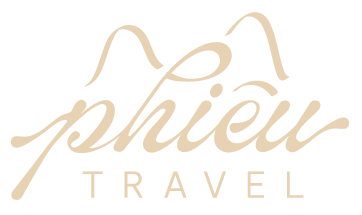
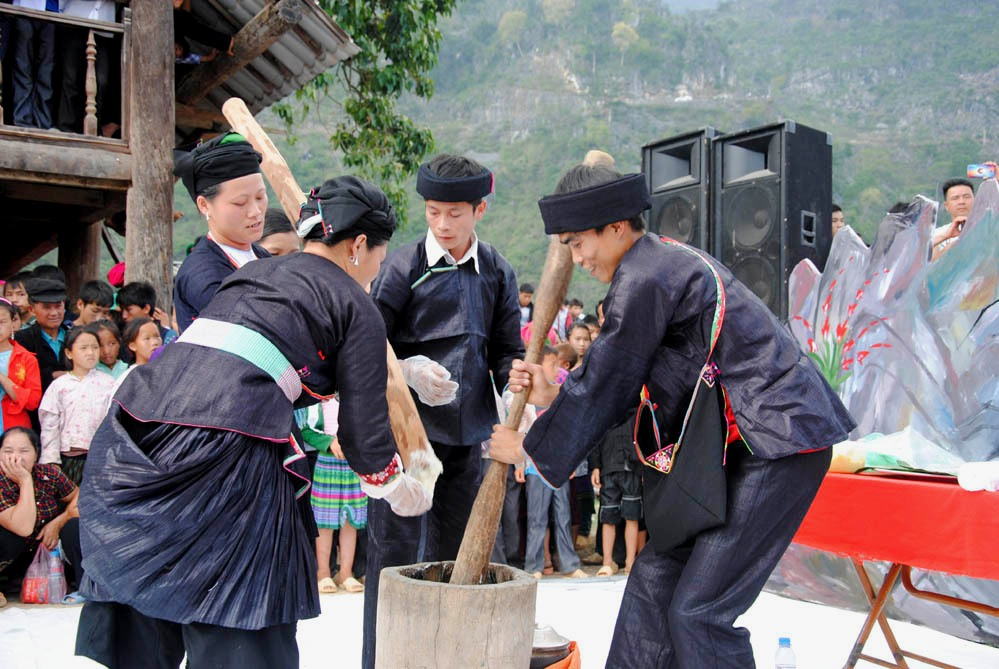
You Might Also Like
Ha Giang Weather in September: Complete Guide for Travelers
Exploring the magnificent Ha Giang Loop in September offers travelers a perfect balance of favorable[...]
Quan Ba Twin Mountains: Ha Giang’s Iconic Fairy Hills and Complete Travel Guide
The mystical Quan Ba Twin Mountains rise from the emerald valleys of Ha Giang like[...]
Vuong family mansion: the architectural marvel and cultural legacy of Ha Giang
Deep in Vietnam’s northern highlands, where mist-shrouded mountains meet terraced rice fields, stands a testament[...]
Ha Giang Loop Safety Tips: How to Ride Securely in Vietnam’s Northern Mountains
The Ha Giang Loop, with its winding mountain roads and breathtaking landscapes, offers one of[...]
The Ultimate Guide to the M-Shaped Curve on Ha Giang Loop
Vietnam’s remote northern province of Ha Giang hides a natural wonder that has captivated adventurous[...]
Most Beautiful Places to Visit in Vietnam: Essential Destinations and Insider Tips
Vietnam captivates travelers with its stunning landscapes, rich cultural heritage, and warm hospitality. From mist-shrouded[...]
Beyond the Beaten Path: Discovering Ha Giang Province in Northeast Vietnam
Ha Giang Province in Northeast Vietnam stands as one of the country’s last frontiers for[...]
Rainy season in Ha Giang: what to expect, when to go, and travel tips
Vietnam’s northern frontier reveals a different face during the rainy season, transforming Ha Giang’s limestone[...]